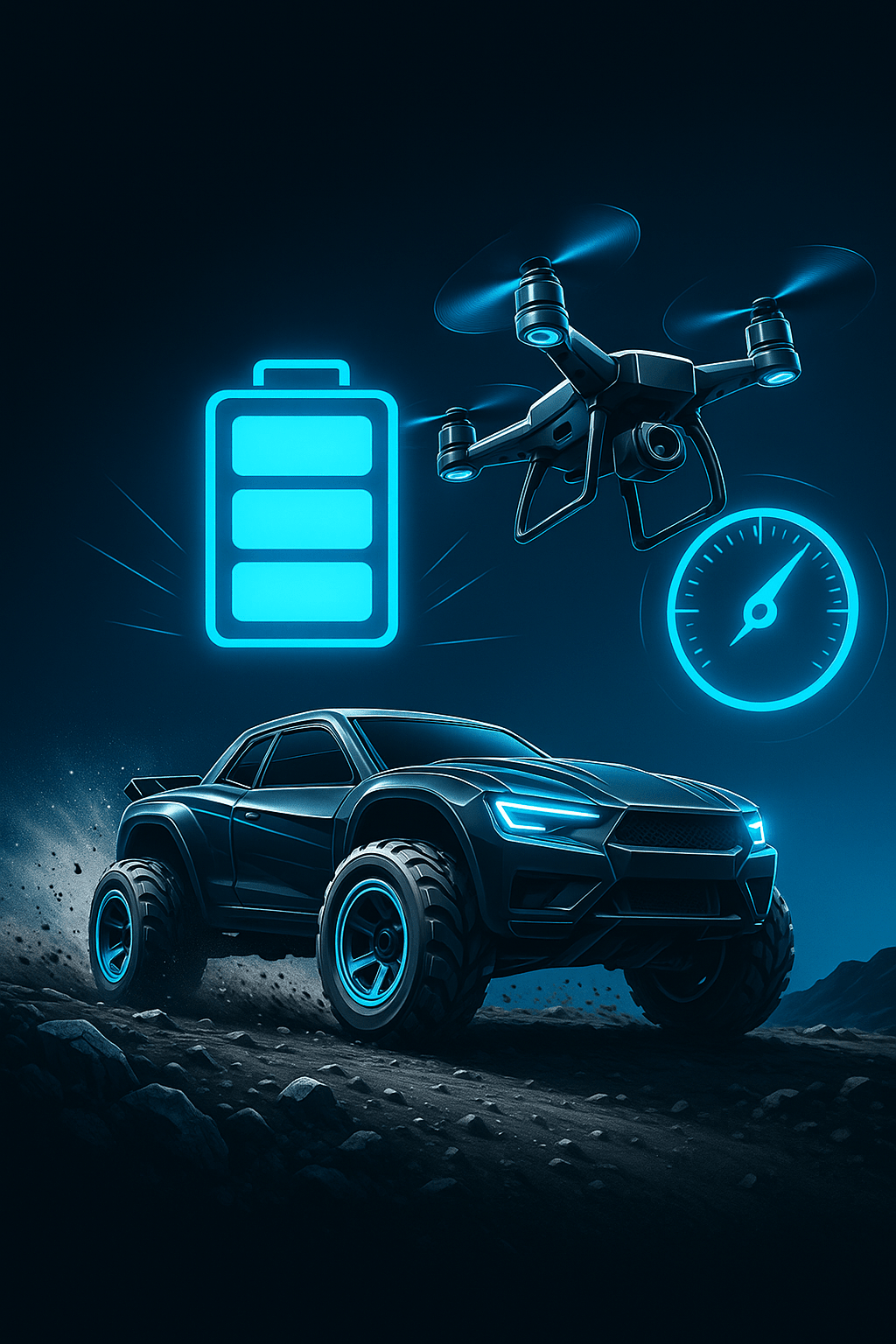RC (Radio Control) vehicles, drones, boats, and planes rely heavily on batteries for power, and understanding how these batteries work can help users choose the right battery for their needs and ensure optimal performance. One of the most important concepts to grasp when dealing with RC batteries is how the individual cells within a battery contribute to the overall voltage. In this blog post, we’ll break down the basics of how RC batteries work, focusing on the role of each individual cell and how they combine to create different battery configurations.
What is a Cell in an RC Battery?
An RC battery typically consists of multiple smaller batteries, referred to as cells. A cell is essentially a single electrochemical unit that stores and delivers electrical energy. In most modern RC batteries, the individual cells are LiPo (Lithium Polymer) or Li-ion (Lithium Ion) cells, which are lightweight, rechargeable, and have a high energy density.
Each cell in a typical LiPo battery has a nominal voltage of 3.7V when fully charged, and it discharges down to about 3.2V. This nominal voltage is a standard value, but the actual voltage can fluctuate between 4.2V when fully charged and 3.0V when discharged. The number of cells in a battery pack directly determines the overall voltage of the battery.
How Battery Voltage Works in Series
RC batteries are usually made by connecting multiple cells in series to increase the overall voltage. When cells are connected in series, their voltages add up, but the capacity (mAh or Ah) remains the same as that of a single cell. So, the voltage of a multi-cell RC battery is determined by how many cells are connected in series.
Let’s break this down with a few examples:
- 3.7V x 2 = 7.4V
- 3.7V x 3 = 11.1V
- 3.7V x 4 = 14.8V
- 3.7V x 6 = 22.2V
Series vs. Parallel Configurations
It’s important to note that cells are typically connected in series to increase voltage, but they can also be connected in parallel to increase capacity (mAh or Ah) without changing the voltage. In a parallel configuration, the cells’ voltages remain the same, but the overall battery capacity increases, allowing for longer run times.
For example:
- A 2S battery with a higher capacity (e.g., 5000mAh) will provide more runtime than a 2S battery with a lower capacity (e.g., 2200mAh).
- A 2S 5000mAh battery will last longer than a 2S 2200mAh battery, but both will have the same voltage (7.4V).
In practice, RC batteries usually combine both series and parallel cells to achieve the desired voltage and capacity, but the voltage contribution from the cells connected in series is the key factor in determining the battery’s overall voltage rating.
Example: 3S Battery in an RC Drone
Let's say you're looking at a 3S 2200mAh LiPo battery for your drone. Here's how the power works:
- Voltage: 3 cells in series give you a nominal voltage of 11.1V.
- Capacity: The battery has a capacity of 2200mAh, which is the amount of energy the battery can store and deliver.
When fully charged, this battery will provide 12.6V (3.7V per cell x 3), and as it discharges, the voltage will drop down to around 9.6V (3.2V per cell x 3). The higher the number of cells, the more voltage the battery will provide to power your RC vehicle or drone.
Conclusion
RC batteries work on a simple principle: connect individual cells in series to increase the voltage. Whether you’re using a 2S battery (7.4V), a 3S battery (11.1V), or a 6S battery (22.2V), the number of cells directly impacts the battery’s voltage, which in turn affects the performance of your RC model.
Understanding this concept is essential for selecting the right battery for your RC vehicle, as a higher voltage generally translates to more power, faster speeds, and potentially more exciting performance. However, it’s also important to ensure that your RC model is compatible with the voltage of the battery you choose—too much voltage can damage your electronics, while too little can result in poor performance.
By getting to know how cells and voltage work in RC batteries, you'll be better equipped to choose the best battery for your hobby and maximize your RC experience.










Share:
The Thrill of RC Racing: A Beginner’s Guide to Remote-Controlled Racing
Understanding Positive and Negative Polarity in Batteries: Why It Matters and How to Determine Your Battery’s Polarity